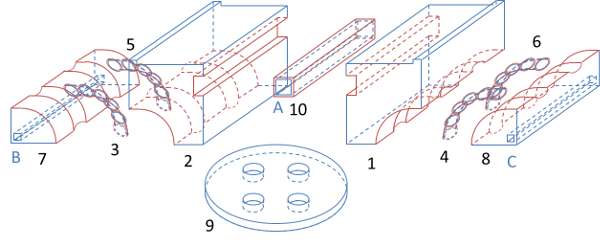PART 1 - Results
NODAL MODELLING FOR ADVANCED THERMAL-MANAGEMENT OF INTERNAL COMBUSTION ENGINE
1st AREA: THERMAL MANAGEMENT
Abstract
The evolution of temperatures in internal combustion engines during cold start is quite important. This greatly affects fuel consumption and vehicle emissions. An advanced thermal management model was developed and used on an automotive Diesel engine in order to determine the evolution of the different temperatures during warm-up stage.
The work focuses on the complete description of the engine components, coolant circuit, and lubricant circuit. The objective is to calculate the heat exchanges between the thermal masses of sub-models (cylinder head, engine block, pistons, oil sump…) and the fluids. Experiments on an engine were undertaken in order to calibrate the model (heat release, friction losses…), but also to obtain the temperature evolutions during transient stage. These last results were used in order to validate the model.
This approach makes it possible to determine the coolant and oil temperature evolution with a minimum of nodes and a relatively short calculation time. The evolution of the coolant temperature in a vehicle during a NEDC cycle with a cold start was studied. A good agreement was obtained. Finally, the model was used in order to study the possibilities to reduce the vehicle mass by a reduction of the engine mass.
Model description
In order to establish the new model and study the influence of the different parameters, a four cylinder turbo-Diesel engine is used. It was equipped with a common rail fuel injection system, a high EGR loop, a turbocharger with a VGT and a charge air cooler.
The simulation code is divided into two distinctive models. On the one hand a high-frequency (HF) code is used. It describes the air circuits of the engine (inlet and exhaust), and computes the injection and combustion processes as well as the wall heat losses. This model has been calibrated with tests performed on the engine test-bench. On the other hand, the nodal model is a low-frequency (LF) code which aims to describe the thermal flux of the engine. Thus, it includes both lubricant and coolant circuits (specifications, pumps, lubricant/coolant exchanger, tanks…) as well as some external components such as the radiator and the heater. Yet its main asset lies in the 91 masses representing the engine (total of 120kg) and the thermal convections or conductions linked. Each mass has its own specifications (weight, volume, material, heat transfer coefficients) and its own external thermal network. Finally the nodal model also includes a set of parameters to define the geometric data of the engine, the road cycle, ambient conditions, and the vehicle parameters.
Exploded view of the 10 masses and 3 coolant nodes representing the engine head above one cylinder
For example, the bottom blocks of the head include the inlet and exhaust pipes, the valves, and parts of the coolant circuit. Many elements must be taken into account for the heat balance: heat from the combustion, friction power from camshaft, and convection with the air circuit, the coolant circuit and the burned gases. This block is divided into four main parts, one for each cylinder, which are themselves divided into ten mass nodes and three coolant nodes. The following figure shows the rough geometrical layout of the ten masses with its coolant circuit for a central cylinder (meaning cylinder number 2 or 3 for the inline-4 cylinder engine).
Engine experimental tests
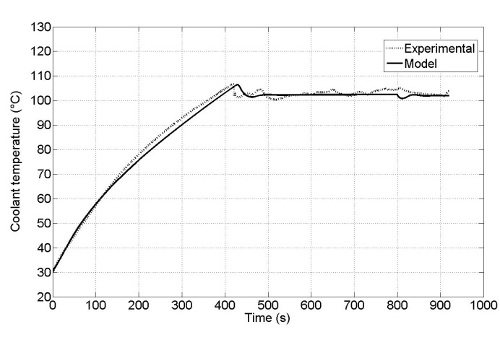
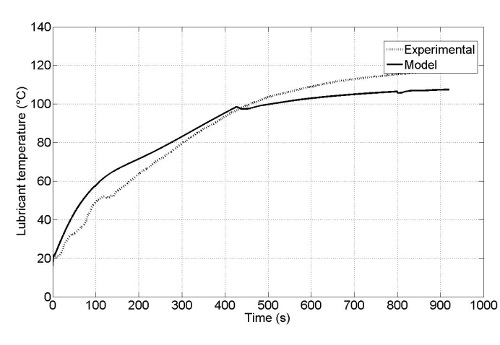
Evolution of the coolant and lubricant temperatures for N = 2200 rpm and Torque = 60 N m.
Vehicle experimental tests
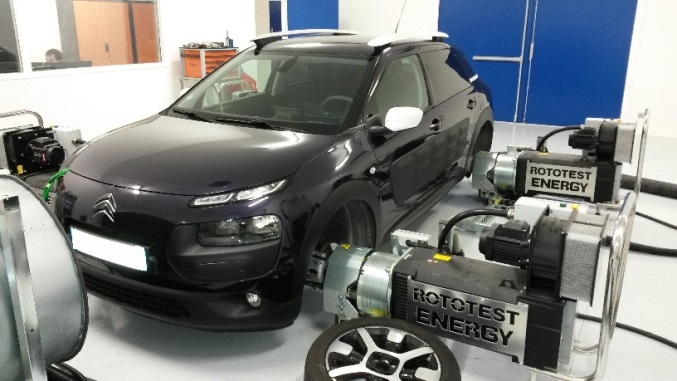
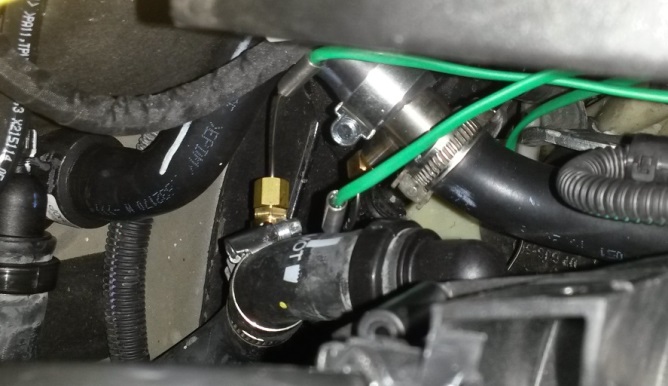
Vehicle installed on the test bench with instrumentation
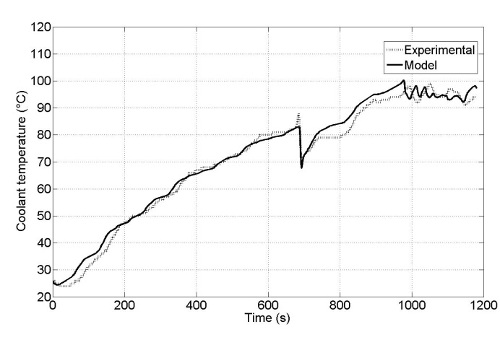

Evolution of the coolant and lubricant temperatures of the vehicle during a NEDC cycle
Research areas
- 1st AREA: THERMAL MANAGEMENT
- 2nd AREA: AIR MANAGEMENT
- 3rd AREA: SUPPORT DEVELOPMENT

